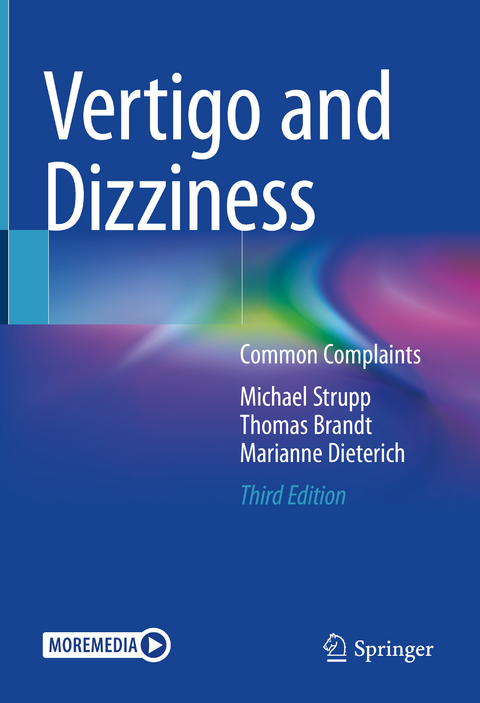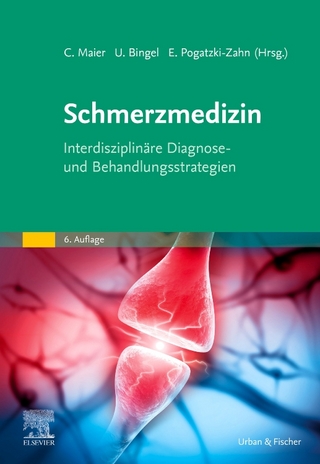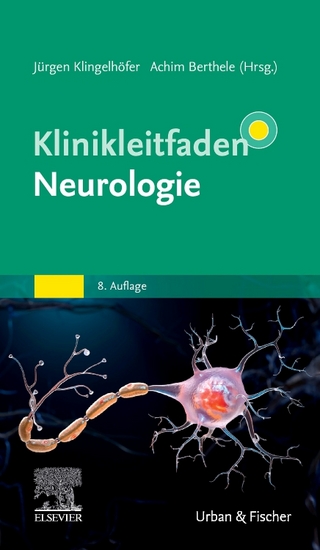
Vertigo and Dizziness
Springer International Publishing (Verlag)
978-3-030-78259-7 (ISBN)
The third edition of this successful book has been fully revised, expanded and updated to reflect the recent advances in vertigo and dizziness, especially with regard to current classifications and clinical trials. The book starts by covering the fundamentals of anatomy and physiology of the vestibular and the ocular motor systems. It provides guidance on how to take the patient history, laboratory and imaging analysis and principles of therapy exploring different therapeutic strategies. It then goes on to cover in detail the diagnosis and current treatment of peripheral, central and functional vestibular disorders as well as miscellaneous rare vestibular syndromes.
Using a uniform chapter style to address the various diseases and adopting a reader-friendly educational format, this is an indispensable guide for clinicians who treat patients with vertigo, dizziness and balance disorders. Hundreds of patient videos are included for the diseases demonstrating typical patient histories and clinical findings. Chapters have also been expanded to discuss the current classification and therapies as well as new and ongoing clinical trials with ample new figures.Written by three top experts in the field, this book is aimed at a broad range of medical specialists, namely neurologists, ENT specialists, neuro-otologists, ophthalmologists, physiotherapists, general practitioners as well as residents and students.
Via app: download the SN More Media app for free, scan a link with play button and access videos directly on your smartphone or tablet.
lt;p>Michael Strupp, MD, FRCP, FANA, FEAN, Professor of Neurology, studied medicine at the Technical University of Aachen and in Rochester, N.Y. Then he worked for three years in basic neurophysiological research, mainly doing patch-clamp recordings (at Baylor College, Houston, in Montpellier and in Munich), before he moved to the Department of Neurology at the University and the German Centre for Vertigo and Balance Disorders at the University of Munich, Germany.
His particular area of interest is the diagnosis and therapy of vestibular, ocular motor and cerebellar disorders. He is very much engaged in the "International Classification of Vestibular Disorders" of the classification committee of the Bárány Society. He is currently Editor-in-Chief of Frontiers in Neuro-otology and Joint Chief Editor of the Journal of Neurology. He has received many clinical and scientific awards, including the Hallpike-Nylen Award 2106 and the Galenus von Pergamon award 2020, is a very passionate teacher and was awarded 'Best Teacher' by the German Neurological Society.Thomas Brandt, FRCP, FANA, FEAN, Professor of Neurology, German Center for Vertigo and Balance Disorders, Ludwig-Maximilians University, Munich, Germany studied medicine at the Universities of Cologne and Essen, Germany. His clinical training was under Richard Jung in Neurology and Clinical Neurophysiology in Freiburg, Germany. From 1976 to 1984 he was Director of the Neurological Clinic of the Alfried Krupp Hospital in Essen, and from 1984 to 2008 Chairman of Neurology and Director of the Department of Neurology, LMU, Munich, Germany. He holds a Hertie Senior Research Professorship since 2008 and was also Chief Executive Director of the German Center for Vertigo and Balance Disorders of LMU, Munich. Prof. Brandt was formerly President of the German Neurological Society, the German Society for Clinical Neurophysiology and Functional Imaging, the International Society for Posture and Gait Research, and the European Neurological Society. He is an honorary member of the German, British, and French Neurological Societies, a member of the European Academy of Sciences and Art, a member of the Bavarian Academy of Sciences, and of the German Academy of Life Scientists, Leopoldina. Awards include the Srinivasan Gold Medal, the Betty and David Koetser Prize for Brain Research, the Bárány Gold Medal, the Doctor Robert Pfleger Award, the Hans Berger Prize, the Wilhelm Erb Medal, the Federal Cross of Merit, Germany, 2016 Charles Eduard Brown-Séquard Lecture, EAN, Copenhagen, and 2017 Masland Award Lecture, WCN, Tokyo.
Major research fields: general neurology and management of dizzy patients, basic mechanisms of vertigo, balance and ocular motor disorders, locomotion, visual-vestibular interaction, motion perception, spatial orientation, and navigation. Applied methods are stance and gait analysis, eye movement recordings, other neurophysiological measures, as well as psychophysics, functional imaging with MRI and PET, and modelling sensorimotor control.
Marianne Dieterich, FANA, FEAN, Professor of Neurology, Department of Neurology and German Center for Vertigo and Balance Disorders,Ludwig-Maximilians University, Munich, Germany studied medicine at the universities of Bochum and Essen, Germany. She is a specialist in the field of neuroophthalmology, neuro-otology, balance disorders, brainstem syndromes and general neurology. Trained under Thomas Brandt in Neurology and Clinical Neurophysiology at the LMU, Munich, Germany, she received a Heisenberg Professorship and was research fellow (1993-1994) in the primate laboratory of the vestibular research lab of Prof. Volker Henn, Zurich, Switzerland. From 1995 to 2001 she was Head of the Clinical Research Group "Vestibular System" at the Department of Neurology, LMU, Munich, and became than Chairperson of Neurology and Director of the
1.Introductory remarks and background.- Anatomy and physiology of the vestibular and the ocular motor system.- How to take the patient history.- How to examine the vestibular and the ocular motor system.- Laboratory examinations .- Imaging.- General principles of therapy,.- vestibular exercises and rehabilitation, pharmacotherapy, surgery, and psychological and behavioural treatment.- 2. Peripheral vestibular disorders.- Introduction and classification.- Bilateral vestibulopathy.- Acute unilateral vestibulopathy.- Benign paroxysmal positional vertigo.- Menière's disease.- Vestibular paroxysmia.- Superior canal dehiscence syndrome.- Perilymph fistula.- Current therapy .- 3. Central vestibular disorders.- Acute peripheral vs acute central vestibular syndromes .- Classification of central vestibular disorders.- Cerebellar dizziness.- Vestibular migraine.- vestibular migraine, and current clinical trials.- Central types of nystagmus.- Cerebellar dizziness .- Cerebellar ataxias..- 4. Functional dizziness.- Persistent postural perceptual dizziness .- Phobic postural dizziness .- Visual dizziness.- 5. Various Vertigo Syndromes.- Traumatic vertigo.- Vertigo in childhood.- Cervicogenic vertigo.- Drug-induced dizziness.- Mal de débarquement syndrome.- Motion sickness.- Height vertigo and acrophobia.
| Erscheinungsdatum | 17.09.2021 |
|---|---|
| Zusatzinfo | XVII, 405 p. 241 illus., 222 illus. in color. With online files/update. |
| Verlagsort | Cham |
| Sprache | englisch |
| Maße | 168 x 240 mm |
| Gewicht | 891 g |
| Themenwelt | Medizin / Pharmazie ► Medizinische Fachgebiete ► Neurologie |
| Schlagworte | Balance disorder • cerebellar ataxias • Cerebellar dizziness • Dizziness • neuro-ophthalmology • Neuro-otology • Nystagmus • traumatic vertigo • Vertigo • Vestibular disorder • Vestibular Migraine |
| ISBN-10 | 3-030-78259-X / 303078259X |
| ISBN-13 | 978-3-030-78259-7 / 9783030782597 |
| Zustand | Neuware |
| Informationen gemäß Produktsicherheitsverordnung (GPSR) | |
| Haben Sie eine Frage zum Produkt? |
aus dem Bereich


